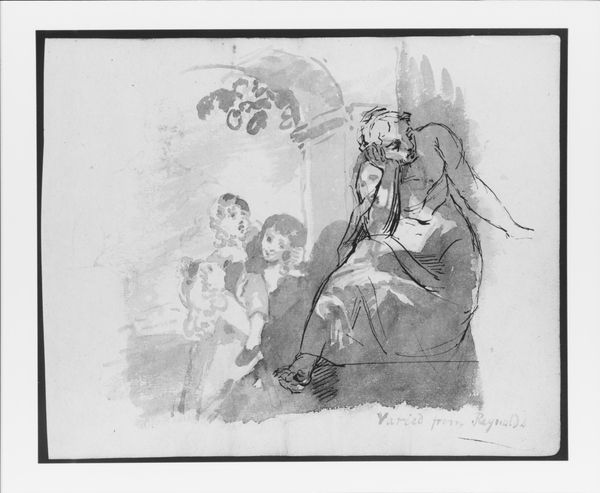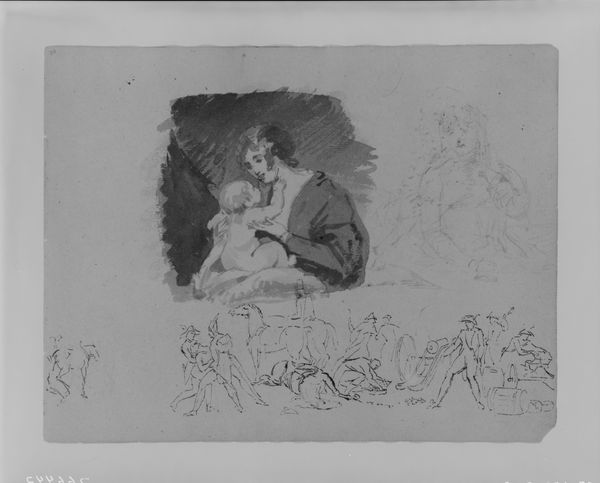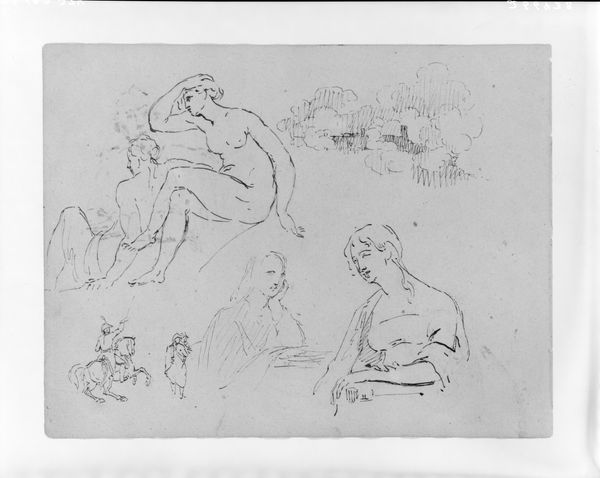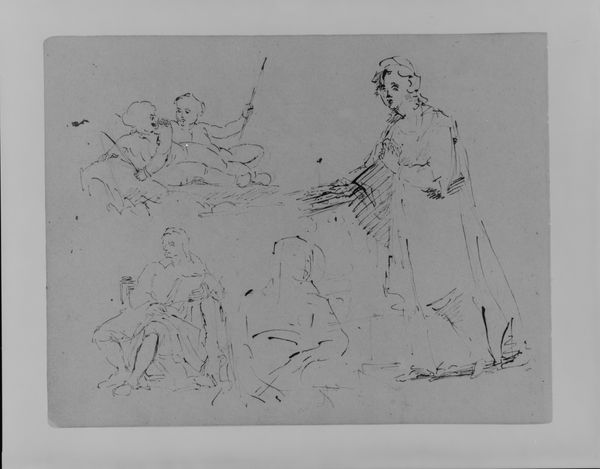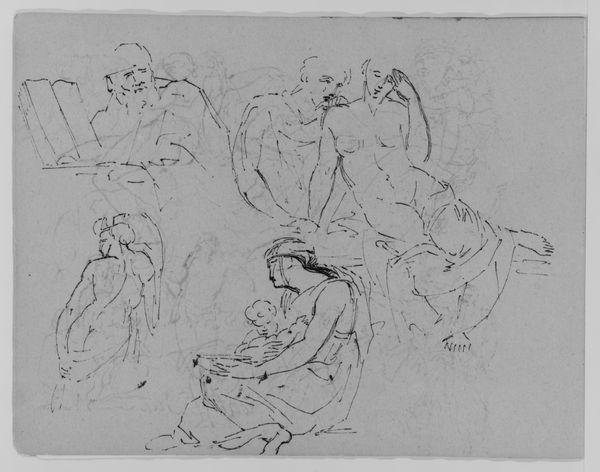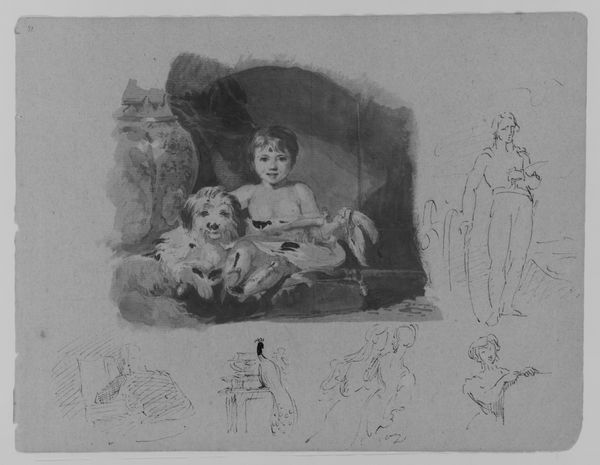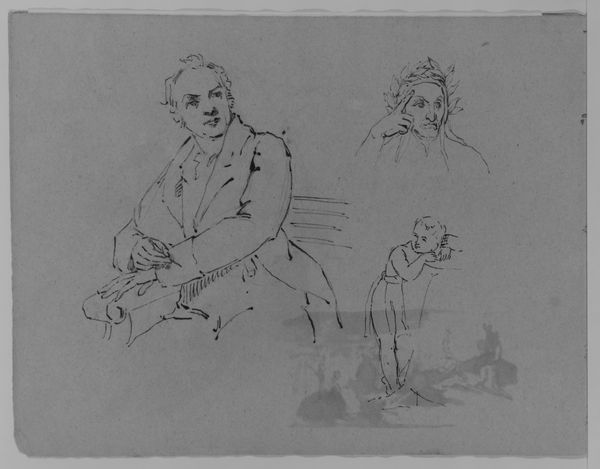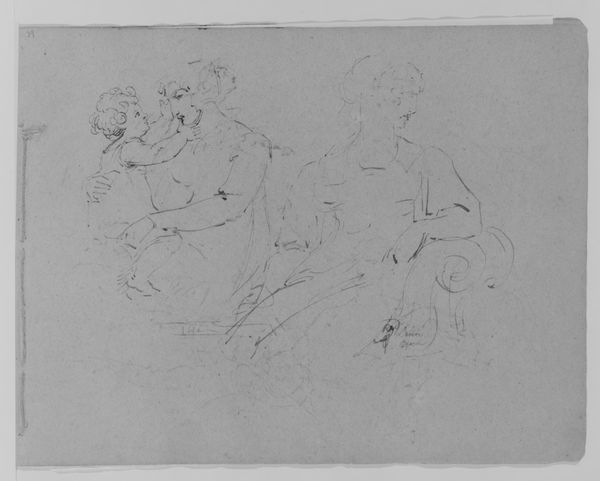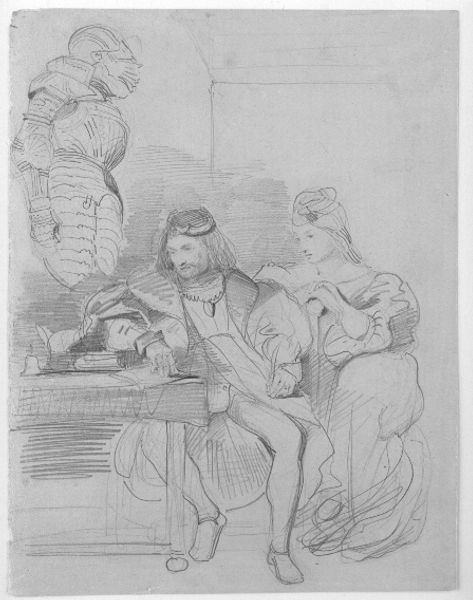![Holy Family et al. [?]; Turning Female Figure, Half Length; Woman Seated at Window (from Sketchbook) by Thomas Sully](/_next/image?url=https%3A%2F%2Fd2w8kbdekdi1gv.cloudfront.net%2FeyJidWNrZXQiOiAiYXJ0ZXJhLWltYWdlcy1idWNrZXQiLCAia2V5IjogImFydHdvcmtzL2E0MWM1ZTI1LTNkMWYtNDA1ZS1iNmJhLWQ3MDE3Yjk2MzU5YS9hNDFjNWUyNS0zZDFmLTQwNWUtYjZiYS1kNzAxN2I5NjM1OWFfZnVsbC5qcGciLCAiZWRpdHMiOiB7InJlc2l6ZSI6IHsid2lkdGgiOiAxOTIwLCAiaGVpZ2h0IjogMTkyMCwgImZpdCI6ICJpbnNpZGUifX19&w=3840&q=75)
Holy Family et al. [?]; Turning Female Figure, Half Length; Woman Seated at Window (from Sketchbook) 1810 - 1820
0:00
0:00
drawing, paper, pencil
#
portrait
#
pencil drawn
#
drawing
#
pencil sketch
#
charcoal drawing
#
figuration
#
paper
#
child
#
romanticism
#
pencil
#
pencil work
#
history-painting
Dimensions: 9 x 11 1/2 in. (22.9 x 29.2 cm)
Copyright: Public Domain
Editor: This sheet of sketches, titled "Holy Family et al. [?]; Turning Female Figure, Half Length; Woman Seated at Window (from Sketchbook)", was created by Thomas Sully sometime between 1810 and 1820. The drawings are rendered in pencil on paper. I find the scene of the Holy Family rather tender, despite its unfinished quality. What do you see in this piece? Curator: Well, this isn't just a study in artistic skill, it's a window into the prevailing societal values and the artist's role within them. Sully, working in the early 19th century, was deeply embedded in a social fabric where depictions of idealized domesticity and religious piety were valued and supported. This tender "Holy Family" wasn't just about religious devotion. It was reinforcing a specific patriarchal structure, with the Madonna-like figure representing the ideal of feminine submission and maternal virtue. Notice the male figure looming behind, a subtle visual cue of dominance. How do you see the role of women depicted across the various sketches here? Editor: I see what you mean about the looming figure, although his tenderness toward the child softens that for me somewhat. And, honestly, I hadn't considered how staged such depictions of motherhood really were, which contrasts greatly with reality. The lone female figures do seem more free and less posed... more empowered somehow, though I cannot put my finger on why. Curator: The contrasting images certainly hint at some questioning on the part of the artist... but within very confined boundaries. Are these truly depictions of female empowerment, or just more depictions made for male consumption, that still uphold patriarchy at the end of the day, and only look powerful through the male gaze? Editor: It’s fascinating how much cultural context can shift how we view what seems like a simple sketch! I will certainly look at 19th century artwork in a very different way. Curator: Indeed. Art isn’t created in a vacuum. Examining the surrounding cultural and political landscape adds immeasurable depth to our understanding.
Comments
No comments
Be the first to comment and join the conversation on the ultimate creative platform.
